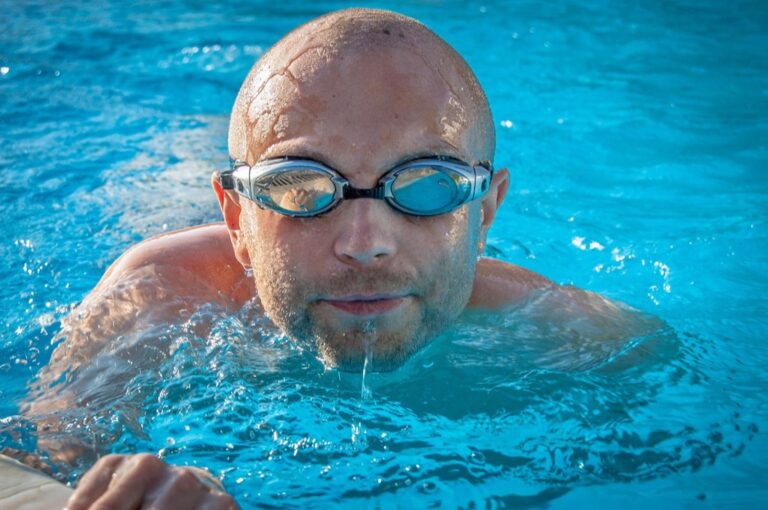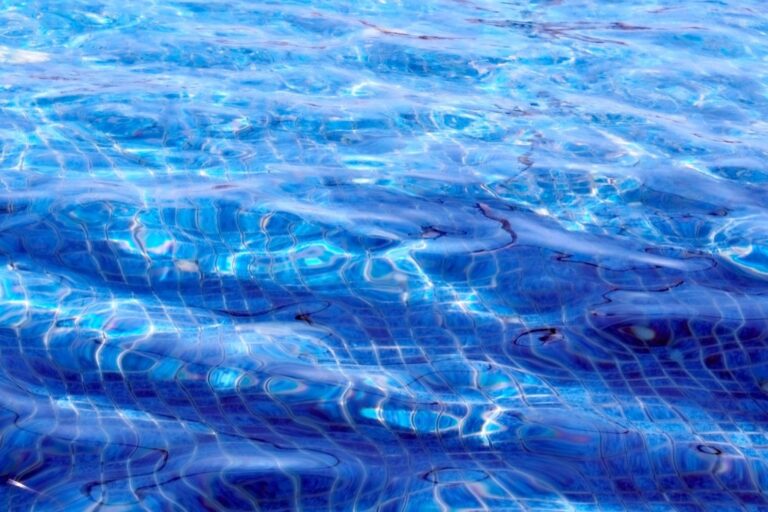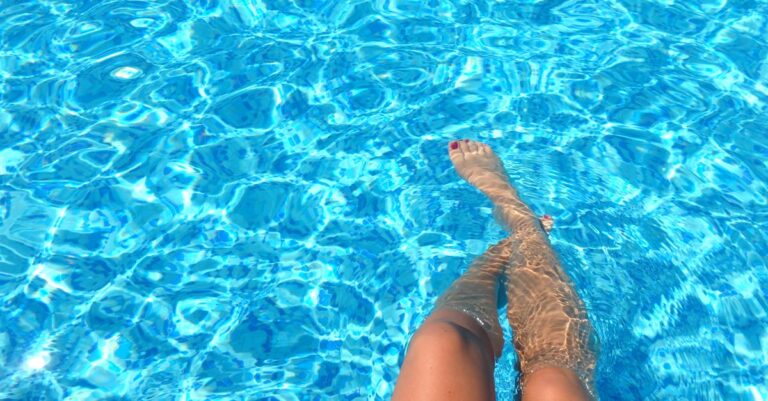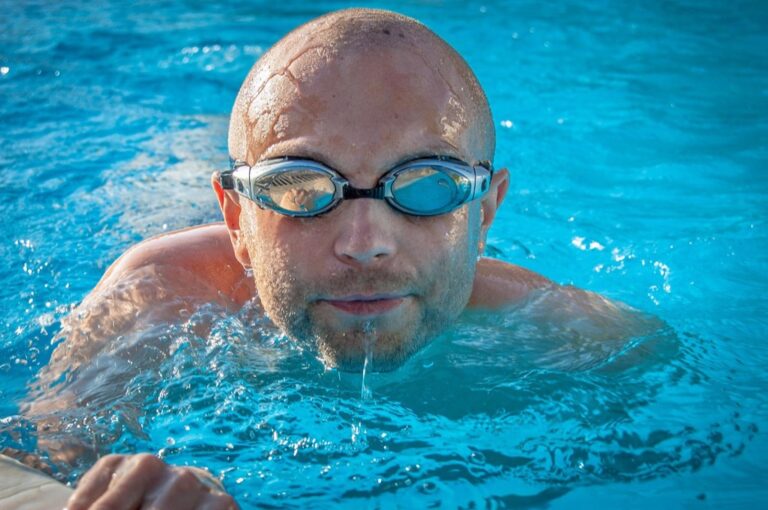5 Ways to Compare Pool Testing Methods for Accuracy That Save Money
Discover 5 proven methods to compare pool testing accuracy. From test strips to digital meters, learn which testing approach ensures safe water and saves money.
Why it matters: Accurate pool testing keeps your water safe and saves you from costly chemical imbalances that can damage equipment or harm swimmers.
The big picture: You’ve got multiple testing options—from basic test strips to digital meters—but they don’t all deliver the same precision or reliability.
Get accurate blood glucose readings quickly with Contour Next test strips. These strips require no coding and feature second-chance sampling, saving you time and money. Compatible with all Contour Next meters.
What’s next: We’ll break down five proven methods to evaluate which testing approach gives you the most trustworthy results for your specific pool needs.
Disclosure: As an Amazon Associate, this site earns from qualifying purchases. Thank you!
Understanding the Importance of Accurate Pool Testing Methods
Accurate pool testing methods directly impact swimmer safety and equipment longevity. You’ll prevent chemical burns, eye irritation, and costly pump damage when your testing consistently delivers precise readings.
Pool water chemistry changes faster than most people realize. Temperature swings, rainfall, and heavy bather loads can shift your pH and chlorine levels within hours. Inaccurate testing methods leave you operating blind during these critical moments.
Keep your pool water clean and clear with Clorox Pool&Spa XTRABLUE 3" Chlorinating Tablets. These tablets kill bacteria, prevent algae, and contain conditioners for silky smooth water.
The cost difference between testing methods pales compared to equipment replacement. A single incorrect chlorine reading can lead to over-chlorination that damages your pool liner, corrodes metal fixtures, or creates dangerous swimming conditions for your family.
Professional pool service companies rely on multiple testing methods because they understand the stakes. You’re not just maintaining water clarity – you’re protecting a significant investment while ensuring every swim is safe and enjoyable.
Evaluating Test Strip Reliability and Precision
Test strips remain the most common pool testing method, but their accuracy varies significantly based on several critical factors. Understanding these variables helps you determine when strips provide reliable results versus when you need more precise alternatives.
Digital vs. Analog Test Strip Readings
Digital test strip readers eliminate human error in color interpretation and provide consistent numerical results. Traditional analog strips rely on your ability to match colors under varying lighting conditions, which can lead to readings that differ by 0.2-0.4 pH units between users.
Get accurate pool and spa readings with AquaChek TruTest strips. These strips test for Free Chlorine/Bromine, pH, and Alkalinity and are designed for use with the AquaChek TruTest digital reader.
Expiration Date Impact on Accuracy
Expired test strips lose their chemical reactivity and produce falsely low readings for chlorine and pH levels. Strips used 6-12 months past expiration typically show 20-30% reduced accuracy, potentially causing you to over-dose chemicals based on incorrect low readings.
Storage Conditions and Their Effects
Heat and humidity degrade test strip chemicals rapidly, making proper storage essential for accurate results. Strips stored in pool sheds or garages during summer months can lose 40-50% of their accuracy within weeks, while cool, dry storage maintains precision for the full shelf life.
Comparing Digital Testing Device Performance
Digital testing devices offer precision that traditional methods can’t match, but their performance varies significantly across different models and price points.
Calibration Requirements and Frequency
Most digital pool testers require calibration every 30-90 days to maintain accuracy. High-end models like the LaMotte ColorQ Pro automatically self-calibrate, while budget devices need manual calibration with buffer solutions. You’ll spend 5-10 minutes monthly on this process, but it’s essential for reliable readings.
Battery Life and Measurement Consistency
Quality digital testers deliver 200-500 measurements per battery charge, lasting 6-12 months with regular use. Cheaper models often show inconsistent readings as battery voltage drops, while professional-grade devices maintain accuracy until complete battery failure. Replace batteries proactively to avoid unreliable measurements during critical testing periods.
Cost-Effectiveness Over Time
Digital testers cost $50-300 upfront but eliminate ongoing strip purchases after the first year. Professional models like the Hanna HI-717 pay for themselves within 18 months compared to quality test strips. Factor in replacement probe costs every 2-3 years when calculating long-term expenses.
Analyzing Professional Laboratory Testing Standards
Professional laboratory testing provides the gold standard for pool water analysis, delivering accuracy levels that surpass all home testing methods. These facilities use sophisticated equipment and certified procedures that commercial pool operators and health departments rely on for critical water quality decisions.
Sample Collection and Handling Procedures
Proper sample collection determines the accuracy of your laboratory results. You’ll need to collect water samples from 12-18 inches below the surface, avoiding areas near return jets or skimmers where chemical distribution varies. Most labs require samples in sterilized containers and demand delivery within 24 hours to prevent bacterial growth that skews results.
Turnaround Time vs. Accuracy Trade-offs
Laboratory testing typically requires 24-72 hours for complete results, making it impractical for daily pool maintenance decisions. While you’ll receive precise measurements for 15-20 parameters including bacteria counts and total dissolved solids, the delay means you can’t address urgent chemical imbalances quickly. Smart pool managers use lab testing monthly for comprehensive analysis while relying on faster methods for routine adjustments.
Assessing Liquid Reagent Testing Kits
Discover your origins with AncestryDNA. Get a detailed ethnicity estimate from over 2,600 regions and connect with living relatives through our easy-to-use DNA test kit.
Liquid reagent kits offer a middle ground between test strips and digital meters, providing reliable results through chemical drop testing. You’ll find these kits particularly valuable for chlorine and pH testing where precision matters more than speed.
Drop Count Precision and Human Error Factors
Drop counting accuracy depends entirely on your technique and lighting conditions. Standard reagent bottles deliver 0.1 ml drops, but squeeze pressure affects drop size by 15-20%. You’ll get consistent results by holding bottles vertically and counting drops at eye level under bright light. Shaky hands or poor lighting can easily throw off your chlorine readings by 0.5 ppm.
Color Matching Challenges and Solutions
Color comparison becomes subjective under different lighting conditions, creating accuracy variations of 0.2-0.4 pH units. Fluorescent lighting shifts color perception toward blue tones, while incandescent bulbs create yellow bias. You’ll achieve better consistency by comparing colors outdoors in natural daylight or using a white LED light source. Color-blind pool owners should rely on digital alternatives for accurate readings.
Determining the Best Testing Method for Your Pool
Your pool’s specific requirements determine which testing method delivers the best value and accuracy for your situation.
Budget Considerations and Long-term Value
Test strips cost $0.50-1.00 per test but lack precision for critical adjustments. Digital meters require $50-300 upfront but eliminate ongoing strip purchases. Professional-grade testers like the Hanna HI-717 pay for themselves within 18 months through improved chemical efficiency and reduced equipment damage.
Pool Usage Frequency and Testing Needs
Daily swimmers need precise chlorine readings that only digital meters provide reliably. Weekend pools can function with quality test strips for routine checks. Commercial pools require laboratory testing monthly plus digital backup for immediate adjustments during peak usage periods.
Conclusion
Choosing the right pool testing method ultimately depends on your specific needs budget and commitment to water maintenance. You’ll find that digital meters offer the best balance of accuracy and convenience for regular swimmers while test strips work well for occasional pool users who prioritize simplicity.
Remember that investing in quality testing equipment pays dividends through reduced chemical waste and equipment protection. Your pool’s safety and longevity depend on consistent accurate measurements so don’t compromise on reliability when it matters most.
Start with your usage patterns and gradually upgrade your testing arsenal as you become more comfortable with pool chemistry. The most expensive method isn’t always the best choice – focus on finding the approach that you’ll actually use consistently.
Frequently Asked Questions
Why is accurate pool testing so important for pool maintenance?
Accurate pool testing is essential for swimmer safety and equipment protection. Precise readings prevent chemical burns, eye irritation, and costly equipment damage like pump corrosion. Pool water chemistry changes rapidly due to temperature, rainfall, and bather loads, making reliable testing crucial. The minor cost of quality testing methods is insignificant compared to potential equipment replacement expenses.
What are the main differences between test strips and digital meters?
Quickly diagnose electrical issues with this digital multimeter. It accurately measures AC/DC voltage, DC current, and resistance, while the backlit LCD and overload protection ensure safe and easy use.
Test strips rely on color matching and cost $0.50-1.00 per test but lack precision for critical adjustments. Digital meters require a $50-300 upfront investment but eliminate ongoing strip purchases and provide consistent numerical results without human error. Professional-grade digital testers typically pay for themselves within 18 months through improved chemical efficiency.
How do expired test strips affect pool water readings?
Expired test strips can produce falsely low readings, leading to dangerous over-chlorination or incorrect chemical balancing. Heat and humidity degrade test strip chemicals significantly, reducing accuracy. Always check expiration dates and store strips in cool, dry conditions to maintain reliable results for safe swimming conditions.
When should I use professional laboratory testing for my pool?
Laboratory testing provides the gold standard for accuracy but takes 24-48 hours for results. Use monthly lab testing for comprehensive analysis of multiple parameters while relying on faster methods for daily maintenance. Commercial pools should combine monthly lab testing with digital backup for immediate adjustments during peak usage.
What factors should I consider when choosing a pool testing method?
Consider your budget, pool usage frequency, and precision needs. Daily swimmers require precise digital readings for safety, while weekend pools can use quality test strips for routine checks. Factor in long-term costs – digital meters eliminate ongoing strip purchases and prevent costly equipment damage through improved accuracy.
How often do digital pool testers need calibration?
Test your water quality quickly and accurately with the Hofun 5-in-1 meter. It measures salinity, pH, TDS, EC, and temperature, making it ideal for pools, aquariums, and more.
Most digital testers require calibration every 30-90 days to maintain accuracy. High-end models like the LaMotte ColorQ Pro offer automatic self-calibration. Quality digital testers deliver 200-500 measurements per charge, while cheaper models may show inconsistent readings as battery voltage drops, affecting reliability.
What’s the proper way to collect pool water samples for laboratory testing?
Take samples from 12-18 inches below the surface using sterilized containers. Deliver samples to labs within 24 hours to ensure accurate results. Avoid surface water or areas near returns and skimmers. Proper collection technique is crucial for obtaining reliable laboratory analysis results.
Are liquid reagent testing kits more accurate than test strips?
Liquid reagent kits provide a reliable middle ground between test strips and digital meters, especially for chlorine and pH testing. They offer better precision than strips but require proper technique and good lighting conditions. Color matching can be subjective, so use natural daylight or white LED lighting for consistent results.











